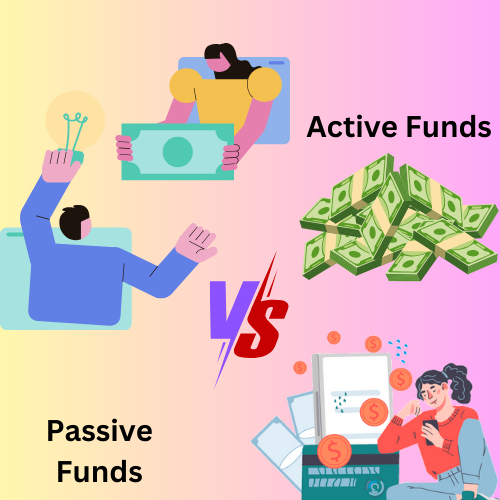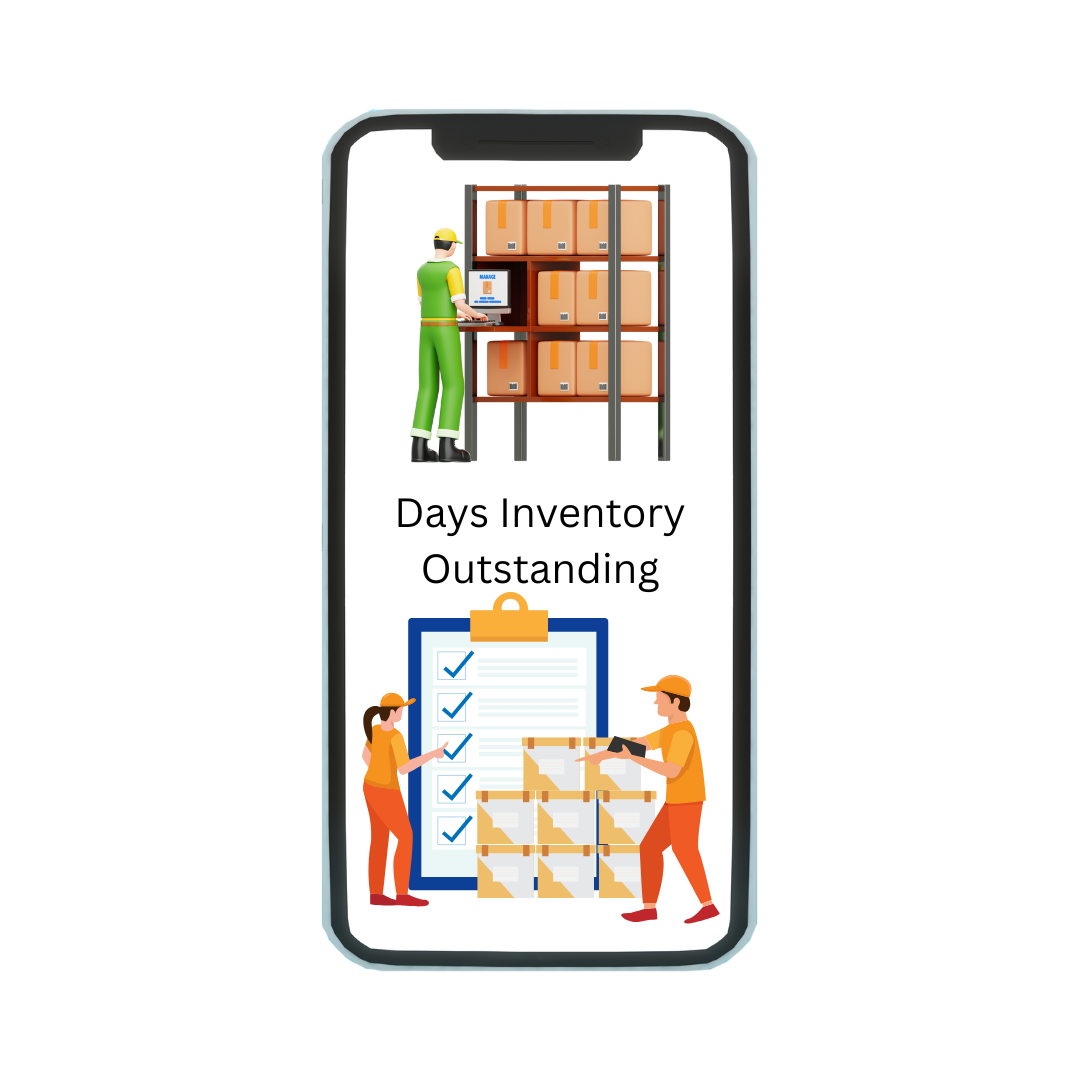Active funds are investment vehicles managed by professional fund managers who actively make decisions about which securities to buy, sell, or hold. The goal is to outperform a specific market index or achieve a particular financial objective. Passive funds, also known as index funds, are designed to replicate the performance of a particular market index by holding the same securities in the same proportions as the index. The goal is not to beat the market but to match its returns.

What is actively managed portfolio?
An actively managed portfolio is a type of investment portfolio in which a professional portfolio manager or a team of managers makes decisions on buying and selling securities with the goal of outperforming a specific benchmark or achieving a particular investment objective.
Key Features of an Actively Managed Portfolio:
- Active Decision-Making: The portfolio manager uses analysis, market research, and forecasting to make regular adjustments to the portfolio. This includes deciding which securities to buy, hold, or sell, based on their evaluation of market trends, economic data, company fundamentals, and other factors.
- Goal to Outperform: The main aim is to beat the performance of a benchmark index or meet a specific return objective (such as achieving a higher-than-average yield or growth rate).
- Flexibility: Managers can adjust the portfolio in response to changing market conditions, taking advantage of short-term opportunities or minimizing risks as they arise.
- Higher Fees: Since active management requires more involvement, research, and analysis, actively managed portfolios typically have higher fees (such as management fees or performance fees) compared to passively managed portfolios.
- Higher Risk and Potential for Greater Rewards: With the goal of outperforming the market, actively managed portfolios may take on more risk. If the manager’s strategy works, the portfolio can outperform the broader market, but poor decisions can also lead to underperformance.
Common Types of Actively Managed Portfolios:
- Mutual Funds: Actively managed mutual funds are designed to outperform a benchmark by selecting individual stocks, bonds, or other assets.
- Hedge Funds: Hedge funds are actively managed, often using more aggressive strategies, such as short-selling or leveraging.
- Private Wealth Management Portfolios: Wealth managers actively manage individual portfolios to meet the specific goals and risk tolerance of high-net-worth clients.
How actively managed portfolio works?
An actively managed portfolio works through the strategic efforts of a portfolio manager who makes regular decisions about which securities to buy, hold, or sell to achieve a desired investment objective. Unlike a passive portfolio, which simply tracks a market index, an actively managed portfolio seeks to outperform the market by using various techniques and strategies. Here’s a step-by-step overview of how it works:
1. Investment Objective and Strategy Definition
- Setting the Objective: The portfolio manager begins by establishing the investment goal, such as capital appreciation, income generation, or a combination of both. The manager also defines the risk tolerance, time horizon, and performance benchmark against which success will be measured.
- Formulating the Strategy: Based on the objective, the manager selects a strategy
2. Research and Analysis
- Market Research: The portfolio manager conducts thorough research on market trends, economic data, industry analysis, and geopolitical factors. They may use macroeconomic indicators, corporate earnings reports, and market sentiment to forecast potential opportunities or risks.
- Security Selection: The manager evaluates individual securities (e.g., stocks or bonds) using fundamental analysis and/or technical analysis
- Active Adjustments: Based on research, the manager decides which securities to buy, hold, or sell, seeking undervalued opportunities or high-growth potential stocks and adjusting the portfolio regularly.
3. Portfolio Construction
- Buying Assets: The manager creates a diversified portfolio by purchasing various securities that align with the fund’s investment strategy. For example, if the goal is growth, the manager might invest in high-potential technology companies or emerging market stocks.
- Sector and Industry Weighting: The manager allocates assets among different sectors (e.g., technology, healthcare, financials) based on current market conditions and potential for future growth or stability.
4. Active Monitoring and Adjustment
- Continuous Monitoring: The portfolio is monitored daily or frequently to assess its performance and respond to new market information. This includes keeping an eye on macroeconomic factors (such as interest rates, inflation, and GDP growth) as well as company-specific news (such as earnings reports or management changes).
- Rebalancing: As market conditions evolve, the manager may rebalance the portfolio by selling assets that no longer fit the strategy and buying others that offer better potential. For example, the manager may increase exposure to defensive stocks during market downturns or shift to cyclical stocks during periods of economic recovery.
- Risk Management: The manager employs risk management techniques like diversification across sectors and asset classes or hedging using derivatives to protect the portfolio against downside risks.
5. Performance Evaluation
- Benchmark Comparison: The portfolio’s performance is measured against the chosen benchmark index. The goal is to outperform this index by making active, informed decisions.
- Review and Adjust Strategy: If the portfolio underperforms, the manager may reevaluate the strategy and make necessary adjustments to improve future returns. This could involve shifting into more promising sectors or changing the mix of assets.
6. Costs and Fees
- Management Fees: Since active management involves constant analysis and decision-making, actively managed portfolios often charge higher fees. These fees compensate for the research, analysis, and expertise of the portfolio manager.
- Performance Fees: Some actively managed portfolios may also charge performance fees, which are based on the profits earned beyond a certain threshold.
Pros of Actively managed Portfolio
- Potential for Outperformance: With skilled management, an actively managed portfolio can outperform the market, especially during market volatility or in specific market conditions.
- Flexibility: Managers can quickly respond to changing market conditions or new opportunities.
- Customization: Active managers can tailor strategies to meet specific goals, such as income generation or capital preservation.
Cons of Actively Managed Portfolio
- Higher Fees: Active management typically involves higher fees, which can eat into returns.
- Risk of Underperformance: If the manager’s decisions are wrong or market conditions are unfavorable, the portfolio may underperform the benchmark.
What is passively managed portfolio?
A passively managed portfolio is an investment portfolio that aims to replicate the performance of a specific market index rather than outperform it. The portfolio manager does not make active decisions about buying and selling individual securities. Instead, they construct a portfolio that mirrors the holdings of the chosen index, maintaining the same weights as the index components.
How passively managed portfolio works?
- Index Selection:
The first step in creating a passively managed portfolio is choosing an index to track. This could be a broad index, a sector-specific index or a bond index.
- Portfolio Construction:
The portfolio manager purchases the same securities that make up the index, in the same proportions. If the index consists of 5% of a particular stock, the portfolio will allocate 5% to that stock.
- Periodic Rebalancing:
To ensure the portfolio continues to reflect the index, rebalancing is done periodically. This happens when companies are added or removed from the index or when changes in the values of holdings shift the proportions.
- Buy-and-Hold Strategy:
Passive portfolios typically follow a buy-and-hold strategy. The portfolio is adjusted only to match changes in the index, not in response to market events or forecasts.
Common Types of Passively Managed Portfolios:
- Index Funds:
Mutual funds that track a specific index and replicate its performance by holding all or a representative sample of the securities in the index.
- Exchange-Traded Funds (ETFs):
Similar to index funds, ETFs track indexes but are traded on stock exchanges, providing flexibility for investors to buy and sell shares throughout the day.
Pros of Passively managed Portfolio
- Lower fees and transaction costs make passive portfolios more cost-effective.
- Diversification provides broad exposure to a variety of assets, reducing individual stock risk.
- Market-matching returns align with overall market performance, providing consistent, long-term growth.
- Transparency ensures investors know exactly what they are investing in.
- Tax efficiency helps minimize tax liabilities due to less frequent trading.
- Simplicity makes passive investing a hands-off, low-maintenance option.
- Outperformance over time often results in better returns than many actively managed funds.
Cons of Passively Managed Portfolio
- No market outperformance: Passive portfolios track an index, meaning they can’t outperform or take advantage of specific growth opportunities.
- Inflexibility: They don’t adjust during market downturns or volatility, which can lead to potential losses.
- Sector concentration risk: Indexes can become concentrated in particular sectors or companies, increasing exposure to certain risks.
- Lack of customization: Investors can’t tailor passive portfolios to their individual goals, values, or preferences.
- Tracking error: Minor deviations from the index can occur, though typically small.
- Less effective in inefficient markets: Passive portfolios may miss opportunities in niche or emerging markets where active management could yield better returns.
- Dependent on long-term market growth: They perform best when markets are growing over time, making them less effective in bear markets.
Active V/s Passive Funds –Key Differences
- Management Style
- Active Funds: Managed by a professional fund manager or team who actively makes decisions on buying, selling, and allocating assets in an attempt to outperform a benchmark index.
- Passive Funds: Aim to replicate the performance of a specific market index without active decision-making. The fund mirrors the holdings and returns of the index.
- Objective
- Active Funds: Seeks to beat the market and generate returns higher than the benchmark by identifying mispriced securities and timing the market.
- Passive Funds: Aims to match the market by replicating the performance of an index without trying to outperform it.
- Costs & Fees
- Active Funds: Typically have higher management fees due to research, analysis, and frequent trading. There are also higher transaction costs due to more active buying and selling.
- Passive Funds: Generally have lower fees because there’s minimal trading and no need for extensive research. Index funds and ETFs (Exchange-Traded Funds) are often more cost-effective due to lower management expenses.
- Potential for Returns
- Active Funds: Has the potential to outperform the benchmark and deliver higher returns, but there is also the risk of underperformance. The outcome largely depends on the skill of the manager.
- Passive Funds: Tracks the benchmark and delivers market returns. While they won’t outperform the market, they also won’t significantly underperform as they move in tandem with the index.
- Risk Exposure
- Active Funds: Managers can adjust the portfolio to reduce risk by shifting to safer assets or sectors during market downturns. However, there’s the risk of wrong decisions that can lead to underperformance.
- Passive Funds: Remain fully invested in the index, so they are fully exposed to market ups and downs. There’s no ability to protect against losses during market declines.
- Flexibility
- Active Funds: Highly flexible, allowing the manager to respond to market conditions, economic trends, and specific opportunities or risks by adjusting holdings.
- Passive Funds: Rigid in structure, as they simply follow the index and cannot respond to changing market conditions or exploit short-term opportunities.
- Management Involvement
- Active Funds: Requires constant monitoring by the fund manager to make decisions based on market changes, stock analysis, and economic conditions.
- Passive Funds: Requires minimal oversight, as the goal is to replicate the index. The portfolio is typically rebalanced only when the index changes.
- Performance
- Active Funds: Performance varies based on the manager’s ability to make the right calls. Some managers may outperform the market, while others may underperform.
- Passive Funds: Typically mirrors the market’s performance. It is predictable, as it moves in line with the index being tracked.
- Tax Efficiency
- Active Funds: Generally less tax-efficient due to more frequent buying and selling, leading to more taxable capital gains for investors.
- Passive Funds: More tax-efficient because there is less trading, meaning fewer capital gains taxes are triggered. This makes them advantageous for long-term investors.
- Customization
- Active Funds: Can be tailored to specific strategies or preferences (e.g., growth investing, value investing, sector-specific funds).
- Passive Funds: Lacks customization as the portfolio strictly follows the index without considering investor preferences or goals.
- Market Efficiency
- Active Funds: May perform better in inefficient markets, where opportunities exist to identify undervalued securities (e.g., emerging markets, small-cap stocks).
- Passive Funds: Perform best in highly efficient markets, where all available information is already reflected in stock prices, making it difficult to outperform.
Factor | Active Funds | Passive Funds |
Management Style | Actively managed by a professional | Passively managed, tracks a market index |
Objective | Outperform the market | Match the market |
Fees | Higher due to active management | Lower due to less trading |
Returns Potential | Potential for higher returns, but risky | Market returns, lower risk of underperformance |
Risk | Can manage risk with defensive moves | Full exposure to market fluctuations |
Flexibility | Flexible, adapts to market conditions | Rigid, follows the index |
Tax Efficiency | Less tax-efficient due to frequent trading | More tax-efficient due to less trading |
Performance | Varies depending on manager’s skill | Mirrors the index performance |
Customization | Can be tailored to investment strategies | No customization, strictly follows the index |
Best in | Inefficient markets with stock-picking opportunities | Efficient markets where information is priced in |
Points to consider before investing in active and passive Funds
When considering investing in active and passive funds, it’s important to evaluate several factors to align your investment strategy with your financial goals, risk tolerance, and preferences. Here are key points to consider:
Points to Consider for Active Funds:
- Investment Objectives:
Determine if you seek higher returns than the market. Active funds aim to outperform, which can be beneficial in specific market conditions.
- Fund Manager’s Track Record:
Research the fund manager’s experience, historical performance, and investment philosophy. A strong track record can indicate skill and ability to navigate market fluctuations.
- Management Fees:
Be aware of higher management fees and expenses associated with active funds. Assess whether the potential for higher returns justifies the costs.
- Investment Strategy:
Understand the fund’s investment strategy (e.g., value, growth, sector-specific) and how it aligns with your investment philosophy and goals.
- Market Conditions:
Consider current market conditions. Active management may be more effective in volatile or inefficient markets where opportunities for stock-picking exist.
- Risk Tolerance:
Evaluate your risk tolerance. Active funds can exhibit greater volatility due to frequent trading and concentrated positions.
Points to Consider for Passive Funds:
- Investment Goals:
Define your investment goals. If your objective is long-term growth with lower costs, passive funds may be a suitable choice.
- Cost Structure:
Take advantage of the lower fees associated with passive funds. Assess how the lower costs impact your overall returns.
- Market Efficiency:
Understand that passive funds perform best in efficient markets where prices reflect all available information. Consider if your target market is efficient.
- Diversification:
Evaluate the level of diversification offered by the index fund or ETF. Ensure it aligns with your risk tolerance and investment strategy.
- Performance Expectations:
Set realistic performance expectations. Passive funds aim to match index returns, so anticipate lower returns than potential active funds but with lower risk.
- Risk Tolerance:
Consider your risk tolerance regarding market fluctuations. Passive funds expose you fully to market volatility since they track an index.
Conclusion
The choice between active and passive funds depends on an investor’s goals, risk tolerance, and time horizon:
Active funds may be suitable for investors seeking potentially higher returns and willing to take on more risk. Passive funds are better suited for cost-conscious investors looking for market-matching returns with lower risk over the long term.




